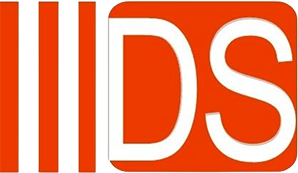The DINSEN® cast iron pipe system complies with the European standard EN877 and has a wide range of advantages:
1. Fire safety
2. Sound protection
3. Sustainability – Environmental protection and long life
4. Easy to install and maintain
5. Strong mechanical properties
6. Anti-corrosion
We are a professional enterprise specializing in cast iron SML/KML/TML/BML systems used in building drainage and other drainage systems. If you have any needs, welcome to inquire with us.
Strong mechanical properties
The mechanical properties of cast iron piping include high ring crush and tensile strength, high impact resistance, and low coefficient of expansion
In addition to exceptional fire protection and sound insulation, cast iron also boasts remarkable mechanical benefits. Its high ring crush strength and tensile strength shield it from the significant forces encountered in applications such as building and bridge construction, as well as in underground systems. DINSEN® cast iron systems meet stringent material demands, including the ability to withstand road traffic and other heavy loads.
Clear Advantages
Embedding DINSEN® pipes in concrete poses no challenges, thanks to the minimal coefficient of expansion of grey cast iron: just 0.0105 mm/mK (between 0 and 100 °C), which closely matches that of concrete.
Its robust impact resistance guards against damage from external factors like vandalism.
The exceptional stability of grey cast iron means fewer fixing points are needed, resulting in less labor and cost-intensive installation.
Handling Pressures up to 10 bar
Socketless cast iron pipes are connected using steel screw couplings with EPDM rubber inserts, providing greater stability than traditional spigot-and-socket joints and reducing the required number of wall fixing points. In high-pressure scenarios typical of roof drainage systems, a simple claw is all it takes to bolster joint stability from 0.5 bar to 10 bar. Compared to plastic pipes, this advantage of cast iron pipes leads to substantial long-term cost savings.
Anti-corrosion
Externally, all DINSEN® SML drainpipes sport a reddish-brown base coat. Internally, they boast a robust, fully cross-linked epoxy coating, renowned for its exceptional resistance to chemical and mechanical forces. These characteristics enable DINSEN® SML to significantly surpass standard requirements, ensuring heightened protection against increasingly aggressive household wastewater. This protection is assured by DINSEN®’s advanced hot mould centrifugal casting method, which yields remarkably smooth interior surfaces, ideal for the uniform application of elastic epoxy without any bubbles.
Similarly, for both pipes and fittings, DINSEN® SML incorporates this superior epoxy coating. The distinction lies in our fittings, which feature this high-quality epoxy coating on both inner and outer surfaces, albeit in the same reddish-brown hue as the pipes. Moreover, like the pipes, this reddish-brown coating is receptive to commercially available coating systems for additional customization.
Other properties
They have an extremely smooth internal surface which allows the water inside to flow fast and prevents deposits and blockages from occurring.
Its high stability also means that fewer fixing points are required than with other materials. Grey cast iron waste water systems are quick and inexpensive to install.
In accordance with the relevant standard EN 877, pipes, fittings and connections are subjected to a 24-hour hot water test at 95 °C. Furthermore, a temperature change test with 1500 cycles between 15 °C and 93 °C is carried out. Depending on the medium and pipe system, the temperature resistance of pipes, fittings and connections must be checked, with our resistance lists providing initial guidelines.
Post time: Apr-22-2024










